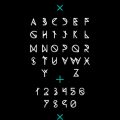Introduction: The Role of Dreams in British Literary Tradition
Dreams have long occupied a significant place within the rich tapestry of British literature, captivating both writers and readers alike with their mysterious and often enigmatic qualities. From the earliest medieval texts to the modern era, British authors have explored dreams as powerful vehicles for prophecy, introspection, and transformation. These nocturnal visions serve not merely as narrative devices but as profound symbols reflecting the hopes, fears, and desires of individuals and society at large. The enduring fascination with dreams in British literary tradition underscores their ability to blur the boundaries between reality and imagination, inviting readers to question the nature of truth and perception. Through a careful weaving of dream imagery, authors such as William Shakespeare, Samuel Taylor Coleridge, and Virginia Woolf have shaped our understanding of dreams—not only as personal experiences but also as cultural artefacts that reveal deeper layers of meaning. This enduring presence and intrigue continue to inspire both literary scholarship and popular interpretations of dreams today.
2. From Shakespeare to Shelley: Pioneers of Dream Imagery
In the tapestry of British literature, dreams have long served as a portal into the hidden recesses of the mind and soul. Seminal authors such as William Shakespeare and Mary Shelley stand as venerated pioneers, weaving intricate dream imagery and the subconscious into the very fabric of their works. Their treatment of dreams not only enriches narrative complexity but also lays foundational stones for later interpretations in both literary and psychological domains.
Shakespeare’s Mastery of Dreams
William Shakespeare, often heralded as the Bard of Avon, deftly employed dreams across his plays to illuminate inner conflict, foreshadow fate, and explore the boundaries between reality and illusion. For instance, in A Midsummer Night’s Dream, dreams become metaphors for the unpredictable nature of love and transformation, while in Macbeth, prophetic nightmares reflect Macbeth’s spiralling guilt and ambition. Through such portrayals, Shakespeare granted his characters—and by extension, his audience—a means to confront their deepest fears and desires.
Mary Shelley and the Gothic Dreamscape
Moving forward to the 19th century, Mary Shelley’s Frankenstein represents a pivotal moment where dreams are intertwined with gothic sensibilities and burgeoning notions of psychology. Shelleys own account of dreaming the premise of Frankenstein demonstrates how deeply personal experiences of the subconscious could inspire creative genius. Within her novel, Victor Frankenstein’s fevered visions serve not merely as narrative devices but as windows into his tormented psyche, reflecting anxieties about creation, responsibility, and human limitation.
Comparison of Dream Motifs in Their Works
| Author | Key Work(s) | Role of Dreams | Cultural Influence |
|---|---|---|---|
| William Shakespeare | A Midsummer Night’s Dream, Macbeth, Romeo and Juliet |
Dreams as prophecy, reflection of inner turmoil, blurred lines between reality & fantasy |
Became archetypes for dream interpretation in theatre; inspired psychological exploration in later literature |
| Mary Shelley | Frankenstein | Dreams as inspiration, manifestation of guilt, exploration of forbidden knowledge |
Pioneered links between creativity, science, and the unconscious; influenced gothic literature’s use of dreams |
Their enduring legacy is evident in how subsequent British writers continued to employ dream motifs—often drawing on Shakespearean ambiguity or Shelleyan introspection—to probe at the mysteries beneath waking life. Thus, these authors did more than merely reflect contemporary beliefs; they shaped the very lens through which dreams would be interpreted in both literature and popular imagination across Britain.
![]()
3. Victorian Reflections: Dreams as Moral and Psychological Inquiry
The Victorian era in Britain was a period marked by rapid social change, industrial progress, and evolving values, all of which were reflected in its literature. British novelists of the nineteenth century frequently utilised dreams as narrative devices to delve into complex moral questions, psychological states, and the expectations imposed by society. In works by authors such as Charles Dickens, George Eliot, and Charlotte Brontë, dreams often served as both mirrors and catalysts—illuminating the inner struggles of characters while challenging readers to reflect on their own consciences.
For instance, Dickens masterfully interwove dream sequences in novels like David Copperfield and A Christmas Carol, where visions that occurred during sleep revealed hidden truths and inspired transformative journeys. The spectral visitations experienced by Ebenezer Scrooge are not mere flights of fancy but rather structured explorations of guilt, regret, and redemption. Similarly, Brontë’s Jane Eyre presents dreams that symbolise Jane’s emotional turmoil and her quest for self-determination amidst rigid societal codes.
Victorian writers viewed dreams as more than supernatural phenomena; they recognised them as windows into the subconscious—a concept later echoed by psychologists like Freud. Through dream episodes, these novelists addressed moral dilemmas such as duty versus desire or individual will against communal expectation. The dreamscape thus became a literary arena where characters confronted their deepest fears and hopes, allowing readers to witness personal growth or tragic decline. In this way, Victorian literature contributed significantly to the cultural dialogue surrounding dream interpretation, bridging the realms of morality, psychology, and social critique.
4. Modernism and Surrealism: Breaking Boundaries of Dream Interpretation
The late 19th and early 20th centuries marked a profound shift in British literature, as authors began to challenge conventional narratives and explore the subconscious through new literary movements such as Modernism and Surrealism. During this era, dreams were no longer relegated to simple portents or symbolic devices; instead, they became intricate reflections of human consciousness, uncertainty, and desire. Visionary writers like Virginia Woolf and Aldous Huxley pioneered innovative narrative techniques that blurred the lines between reality and dream, inviting readers to question the very nature of perception.
Modernist literature in Britain often employed stream-of-consciousness narration—a technique designed to mimic the fragmented and nonlinear qualities of dreaming. For instance, Woolf’s novels, particularly Mrs Dalloway and To the Lighthouse, weave together past memories, present experiences, and fleeting impressions much like a dreamscape. Through these methods, British authors offered a more nuanced approach to dream interpretation, one that acknowledged the complexity of the mind rather than imposing straightforward meanings.
Surrealism soon followed, taking inspiration from Freudian psychoanalysis and continental avant-garde movements. While not strictly British in origin, surrealist ideas found fertile ground among English poets and novelists who sought to liberate imagination from rational constraints. The works of David Gascoyne and Leonora Carrington are notable examples; their writing embraced bizarre juxtapositions and illogical sequences reminiscent of actual dreams. These developments encouraged readers to see dreams as creative forces—capable not only of revealing hidden truths but also of generating entirely new realities within literature.
Movement |
Key Authors |
Dream Characteristics |
|---|---|---|
| Modernism | Virginia Woolf, James Joyce (Irish-British influence), E.M. Forster | Stream-of-consciousness, fragmentation, subjective reality |
| Surrealism | David Gascoyne, Leonora Carrington | Bizarre imagery, unconscious symbolism, non-linear narrative |
This period thus represents a turning point in the literary treatment of dreams within British culture. By breaking away from traditional interpretations and embracing psychological depth, Modernist and Surrealist writers opened up new possibilities for understanding both dreams themselves and their significance in literature.
5. Cultural Context: British Society and Symbolism in Dream Narratives
Within the realm of British literature, the dream sequence emerges as a distinctive narrative device, reflecting not only the subconscious of characters but also the nuanced fabric of British society itself. The cultural context of Britain—shaped by its class structure, historical events, and collective psyche—infuses these dreams with a unique symbolic resonance. Authors such as Virginia Woolf, George Orwell, and Charles Dickens employ dream motifs that are deeply intertwined with social realities, using them to illuminate prevailing anxieties, desires, and moral dilemmas.
The symbolism found within these literary dreams often draws upon quintessentially British imagery: mist-shrouded moors, ancient manors, bustling Victorian streets, and the ever-present motif of rain or fog. These elements are more than mere backdrops; they function as metaphors for uncertainty, transition, or even suppressed emotion—a reflection of the reserved nature frequently associated with British identity. For instance, in Dickens’ works, dreams might reveal the inner turmoil of characters grappling with poverty or injustice, while Woolf’s fluid dreamscapes can echo the struggle between individual aspiration and societal expectation.
Social concerns are also vividly expressed through dream narratives. Issues such as class division, colonial guilt, gender roles, and existential anxiety are subtly woven into nocturnal visions. A dream about ascending an endless staircase might symbolise both social mobility and its inherent frustrations within a rigid class system. Similarly, surreal encounters with authority figures in dreams can mirror real-world tensions between individual autonomy and institutional control—a theme poignantly explored by Orwell.
Motifs of confinement and liberation recur frequently in British literary dreams. Closed doors, labyrinthine corridors, or walled gardens serve as powerful symbols for personal limitation or the yearning for freedom. These motifs are often set against a backdrop of tradition-laden settings—cathedrals, universities, or stately homes—underscoring the weight of history and inherited values on the dreaming mind.
Ultimately, British authors use dream sequences not merely as escapist interludes but as profound commentaries on their society’s values and conflicts. By analysing these symbols and motifs through the lens of British culture, readers gain deeper insight into both the literature itself and the enduring concerns that shape Britain’s national consciousness.
6. Legacy and Influence: British Authors in Contemporary Dream Interpretation
The legacy of British authors in the realm of dream interpretation is both enduring and profound, continuing to influence contemporary perspectives in remarkable ways. The literary exploration of dreams by figures such as William Shakespeare, Mary Shelley, and Virginia Woolf has not only enriched the fabric of English literature but also shaped modern attitudes toward the meaning and function of dreams. Today, both scholars and the general public draw upon these literary traditions when considering their own nocturnal visions.
The Academic Perspective
Within academic circles, the nuanced treatment of dreams in British literature serves as a vital reference point for interdisciplinary studies that connect psychology, literary criticism, and cultural history. Shakespeares use of dreams to reveal character motivations or foreshadow events is frequently cited in university courses and scholarly papers. Similarly, the psychological depth found in Woolf’s stream-of-consciousness narratives encourages researchers to consider how literature can mirror the subconscious processes explored by Freud and Jung. These intellectual legacies ensure that British authors remain central to contemporary debates on the interpretation of dreams.
Popular Culture and Everyday Dream Analysis
Beyond academia, the influence of British literature permeates popular culture and everyday approaches to dream analysis. Readers continue to find meaning in dream sequences crafted by classic authors, often seeing their own experiences reflected in these timeless texts. Books, films, and even online forums discussing dream symbolism regularly reference motifs established by British writers, reinforcing the notion that literary art and personal insight are intimately connected.
A Tradition That Evolves
The enduring appeal of British authors lies in their ability to capture universal themes through the unique lens of dreams. As society evolves, so too does the interpretation of these literary dreams; new generations reinterpret classic works according to contemporary concerns—whether related to identity, technology, or social change. Yet the fundamental questions posed by Shakespearean reveries or Gothic nightmares remain relevant, testifying to a tradition that both honours its roots and adapts with time.
In essence, the literary treatment of dreams by British authors continues to shape not only academic analysis but also popular methods of dream interpretation today. Their stories invite us to reflect on our innermost selves and remind us that dreams—whether penned centuries ago or experienced last night—are a vital part of our shared human journey.


